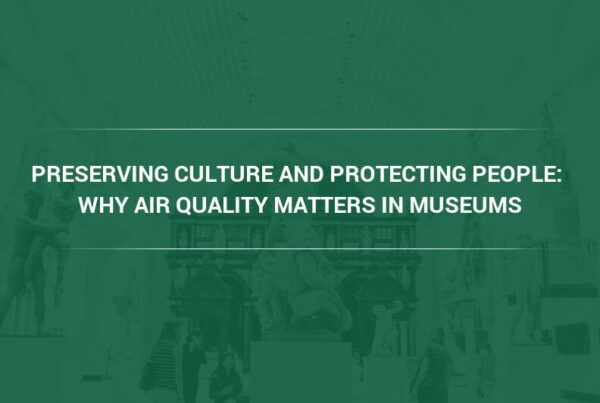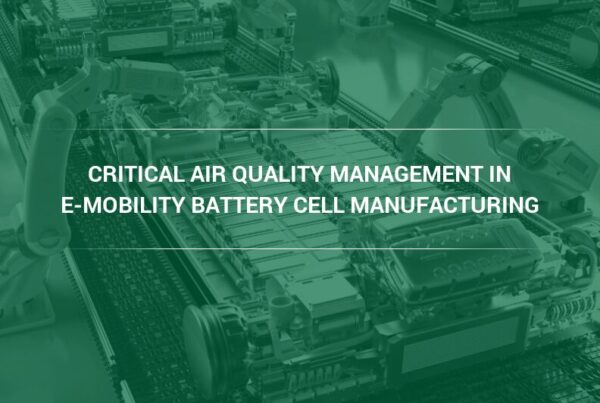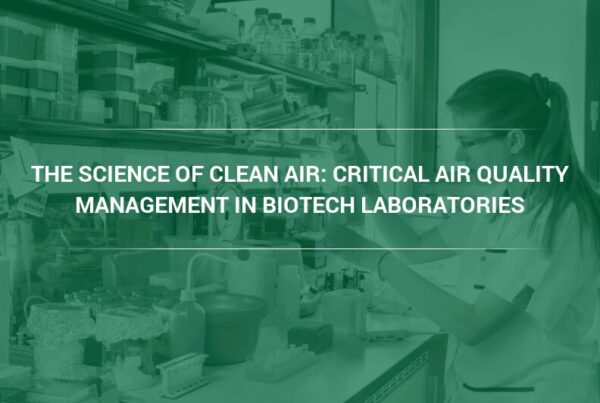Air pollution isn’t just an environmental problem—it’s a serious health risk and a major challenge for businesses. The 2025 “State of the Air” report from the American Lung Association reveals startling truths about air quality in the United States, highlighting the urgency for immediate action. At Camfil, we understand the importance of clean air—not just for individuals, but also for businesses aiming to create healthier, more sustainable environments.
Continue reading for a breakdown of the key findings of the report, the impact of air pollution on businesses and building systems, and how advanced air filtration solutions from Camfil can be part of the solution.
What Is the 2025 “State of the Air” Report?
The “State of the Air” report, published annually by the American Lung Association, is a comprehensive analysis of air quality in the United States. This report grades counties on the levels of ozone and fine particle pollution (both short-term and year-round) based on data from EPA air quality monitoring stations. The 2025 edition comes with some concerning findings tied to wildfires, extreme weather, and industrial emissions—all factors perpetuating poor air quality.
Key Takeaways from the Report:
- Nearly 131 million Americans live in areas with failing air quality grades, a significant increase from previous years.
- Extreme weather events such as wildfires have led to spikes in short-term particle pollution.
- Communities of color and low-income populations are disproportionately impacted, with these groups 2.3 times more likely than white populations to live in areas with unhealthy air.
- Year-round particle pollution remains elevated in Western U.S. cities like San Bernardino, CA, hinting at a growing disparity across regions.
These alarming findings reinforce the need for proactive solutions to improve air quality, especially in indoor spaces, where Americans spend as much as 95% of their time.
Top 10 Most Polluted American Cities in 2025
The State of the Air Report ranks localities based on pollution levels in each category. The following list shows the cities with the highest levels of ozone pollution, based on 2025 data.
- San Bernardino, CA
- Riverside, CA
- Los Angeles, CA
- Tulare, CA
- Kern, CA
- Fresno, CA
- Maricopa, AZ
- Jefferson, CO
- Placer, CA
- Douglas, CO
The report’s findings show a disproportionate strain on West Coast communities. Of the 25 most ozone-polluted cities in 2025, only one was on the East Coast: Fairfield, Connecticut, a city of around 60,000 people with markedly high ozone levels, due largely to meteorological patterns causing traffic-related pollution from the entire region to settle over the area. Two of the top 25 were located in Texas (Tarrant and Harris), while all the rest are in California, Nevada, Arizona, New Mexico, and Colorado.
Addressing ozone pollution in indoor spaces requires different filtration solutions than standard HVAC filters provide. To target ozone and other molecular (or gaseous) pollutants, building managers should employ activated carbon or other activated media filters.
The Business Impact of Poor Air Quality in Commercial Spaces
Air pollution doesn’t just harm individuals’ health; it impacts businesses’ bottom lines too:
1. Strain on HVAC Systems
Poor outdoor air quality leads to increased buildup of particulates (like PM2.5 and PM10) in HVAC systems. Without proper filtration, particulate matter can:
- Clog HVAC filters, leading to reduced system efficiency.
- Increase energy consumption, raising operating costs.
- Cause wear and tear, leading to higher maintenance expenses.
2. Decreased Employee Productivity
Breathing polluted air in indoor spaces has been linked to a dip in cognitive function and productivity. Employees exposed to poor-quality indoor air are also more likely to suffer from health issues like headaches, asthma, or respiratory infections, leading to higher absenteeism.
3. Sustainability and Compliance Challenges
With new air quality regulations being introduced globally, businesses are expected to adopt sustainable practices. Companies without adequate air filtration solutions may face steep penalties and loss of reputation.
Camfil’s Air Filtration Solutions: A Comprehensive Approach to Improving IAQ
At Camfil, decades have been spent developing high-performance air filtration technologies tailored to every sector. Here’s how these solutions directly address the challenges highlighted in the State of the Air report:
1. High-Efficiency Particle Filters
To combat the smallest and most harmful particulate pollution, Camfil provides HEPA and ULPA filters, which capture a minimum of 99.97% of airborne particles as small as 0.3 microns. These filters are engineered to work efficiently even in regions with high levels of particle pollution caused by wildfires or industrial activity.
2. Smart Air Filters for HVAC Optimization
Products such as the Durafil family of high-efficiency air filters are designed to protect HVAC systems by optimizing airflow and minimizing pressure drop, ultimately reducing energy consumption. This is a cost-effective solution for facilities dealing with dust and particulate accumulation.
3. Custom Solutions for Ozone Pollution
Fine-tuned to tackle high ozone levels, City-Flo filters utilize activated carbon to remove gaseous pollutants alongside particulate matter. These filters are particularly effective for urban businesses facing significant ozone pollution challenges.
4. Air Purifiers for Healthy Workspaces
For businesses seeking to improve indoor air quality without overhauling existing HVAC systems, portable air purifiers like the CC500 are available. These units deliver clean air in offices, schools, and healthcare facilities, helping to reduce the spread of airborne illnesses.
5. Eco-Friendly Filtration
Sustainability is at the core of Camfil’s mission. When possible, filters are crafted with recyclable materials, but always designed for a longer lifespan, reducing waste and environmental impact. By switching to Camfil filters, businesses can significantly lower their carbon footprint while maintaining air quality compliance.
IAQ Solutions Across Industries
The findings of the 2025 “State of the Air” report are a reality check for businesses and policymakers alike. If air quality is compromised outside, it’s critical to ensure cleaner, healthier air inside. Taking proactive steps now will safeguard both individuals and organizations from the harmful impact of air pollution. Camfil’s air filtration solutions help put cleaner indoor air within reach for schools, hospitals, industrial facilities, and corporate offices:
- For healthcare facilities: HEPA filters help ensure healthy environments, protecting patients and staff from airborne contaminants.
- For manufacturing plants: High-efficiency, industrial-grade filters help safeguard machinery against particulate buildup while improving worker health.
- For offices and schools: Solutions like low-pressure-drop filters reduce energy costs and create healthier spaces for employees and students.
With tailored solutions, expert guidance, and a proven track record, Camfil has helped countless businesses worldwide breathe easier. Connect with your local Camfil representative today.
About Camfil
For over 50 years, Camfil has been developing clean air solutions that enhance well-being, improve productivity, and minimize environmental impact. As a global manufacturer of commercial and industrial air filtration systems, Camfil is committed to conserving resources while benefiting both businesses and the planet. Headquartered in Stockholm, Sweden, Camfil operates 30 manufacturing sites, six R&D centers, and has a presence in over 35 countries with 5,600 employees worldwide. Learn more about creating cleaner, healthier indoor air at www.camfil.us.
Media Contact
Lynne Laake
Camfil USA Air Filters
Phone: 888-599-6620
Email: Lynne.Laake@camfil.com



